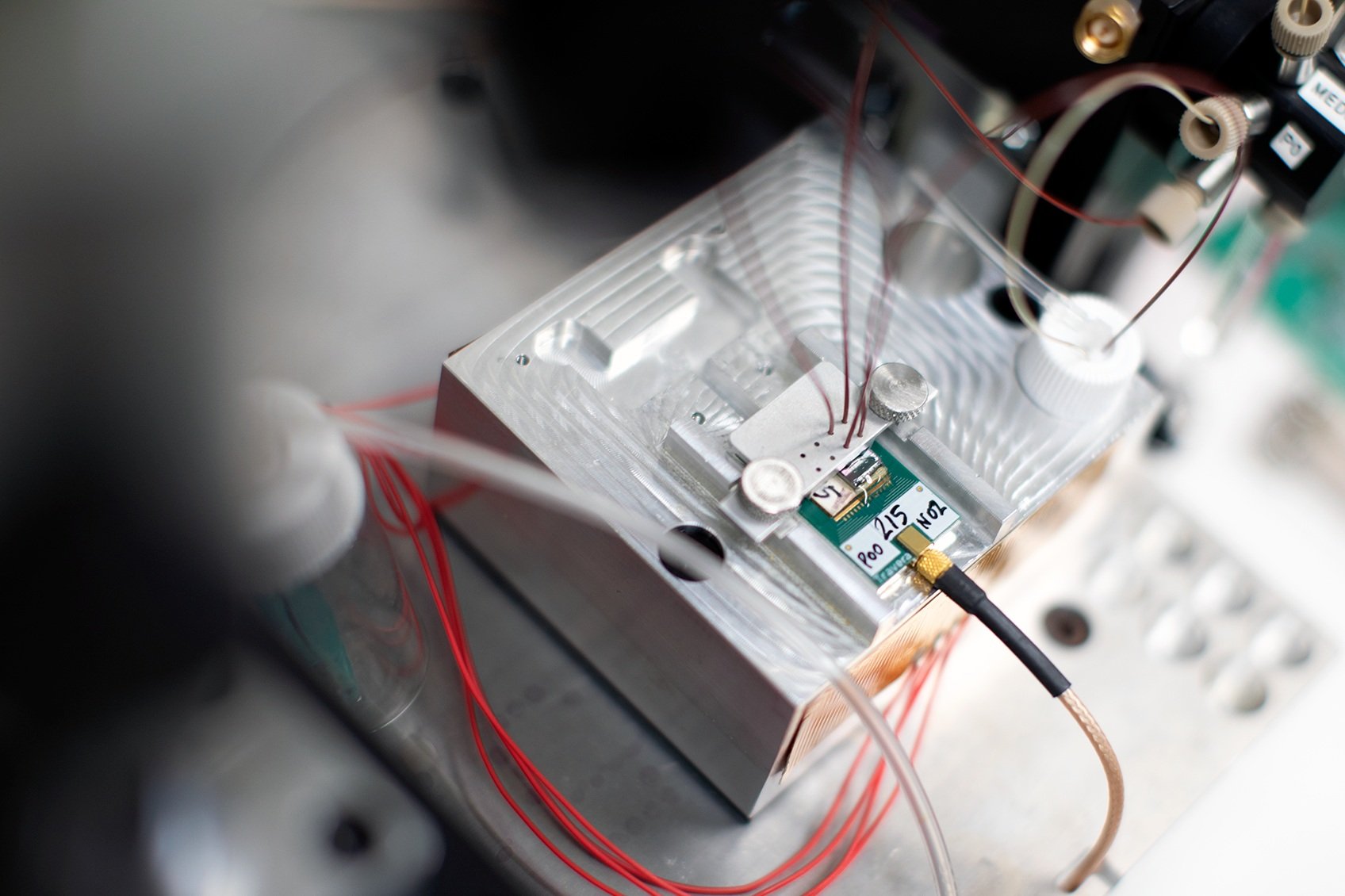Technology
The Suspended Microchannel Resonator
A Transformation in Cancer Cell Measurement
Travera’s Rapid Therapy Selection™ test uses proprietary technology developed in the Manalis Lab at MIT — the Suspended Microchannel Resonator (SMR). This revolutionary invention has such extraordinary sensitivity that it can measure the mass response (weight change) of a patient’s ex vivo cancer cells in response to a cancer drug or combination of drugs 100 times more precisely than any alternative technology.
When an effective cancer drug is applied to a collection of cancer cells, it disrupts their growth. This weight change begins within a few hours of exposing the cancer cells to effective cancer drugs.
Using the SMR, we weigh 5,000 individual cancer cells in the sample and plot their mass distribution.
The SMR MEMS chip on a finger

How the Suspended Microchannel Resonator Works
The SMR is a microelectromechanical systems (MEMS) device that can weigh individual cells to a precision better than one part in 1,000. This corresponds to a change of fewer than 50 femtograms in the weight of a cell, or approximately 5 nanometers in the diameter of a cell.
The SMR uses the principle that the resonating frequency of an oscillating cantilever (visualize a diving board in motion) is proportional to its mass. The SMR is made up of a cantilever containing a tiny fluidics channel surrounded by a vacuum. When a single cell flows through the channel inside the cantilever, the resonant frequency of the cantilever changes in proportion to the mass of the cell.
We can measure the change of the resonant frequency of the cantilever with a precision of 10 parts per billion, which gives us an extraordinarily accurate measurement of the mass of the cell — before and after drug exposure.

